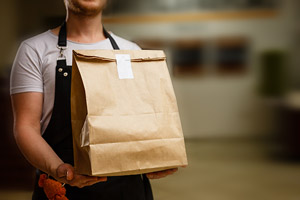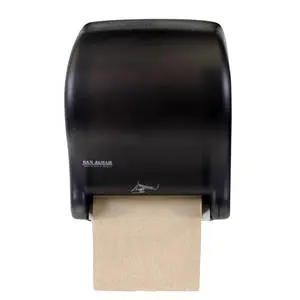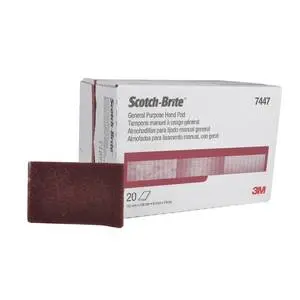Don’t panic! Be sensible and take the appropriate measures for your workplace

Coronavirus (COVID 19) cases have been confirmed in 49 states as of March 16, 2020, according to CNN. But the major impact on the onsite dining community in the U.S. has not come from direct exposure, but more as the result of how state officials across the nation are responding to the pandemic.
Amidst warnings by health officials that the US could face a similar crisis as Italy if citizens do not fully embrace self-isolation and social distancing, some state officials have ordered restaurants and bars to close their doors or facilitate takeout and delivery only, as a means to curb the spread of the virus. But in Georgia, Governor Kemp is urging restaurant operators to keep their doors open.
The Centers for Disease Control and Prevention (CDC) issued a dramatic recommendation stating gatherings of 50 people or more should be canceled or postponed throughout the country for the next eight weeks. The CDC also mentioned that this recommendation did not apply to the daily operation of schools, educational institutes or businesses.
According to The Washington Post, public health experts say that restaurants are safer than other public places like buses, subways and event venues, where people are packed closer together. However, many casual dining and fine dining establishments are being forced to offer curbside pickup and delivery only, and fast-food establishments are switching to drive-through only.
This is a very tough time for restaurants and foodservice operations everywhere as state governments advise people to stay out of restaurants and bars, and in some states, ordering restaurants to shut down operations. While it is hard to foresee what will happen in the future, owners and operators can do their part to curb the spread of coronavirus and help one another get through these uncertain times.
The Associated Press reports that for most people, COVID 19 causes only mild or moderate symptoms, such as fever and a dry cough. For older individuals (50 +) and those with existing respiratory health issues and chronic illness, it can cause more severe reactions, including pneumonia.
The World Health Organization recommends a six-foot buffer between people who may cough or sneeze.
Health policy experts say that that the coronavirus spread is a “fluid situation” and diners and operators alike should keep monitoring so they can base their decisions on the latest information. Restaurant brands should have a contingency plan in place for responding to a potential pandemic and resulting crises.
Owners and operators across the United States need to get ahead of fear by implementing new procedures and tightening current ones.
According to QSR web, restaurant operators should do the following to protect their businesses from potential supply shortages, employee absenteeism and possible theft:
- Secure food supply and distribution agreements since much of our food supply are dependent on international suppliers who may be more affected than those in the US.
- Create a food security plan for your restaurant to protect from theft, if shortages occur.
- Review company sick leave policies with human resources or contact legal experts about preventing ill employees from working.
- Plan for employee absenteeism that experts say could range from 15-30% in a pandemic, resulting from limited transportation and other factors.
- Create a communication plan for employees that includes back up employee contacts to verify presence at work. Have other back up employees ready to fill shifts if needed.
- Cross train employees so healthy workers can fill in for those who are ill.
- Discourage workers from using other workers’ phones, workspaces, and other work tools and equipment. Make sure everyone has their own space in which to perform necessary job functions.
- Have a method in place for identifying and isolating potentially infectious individuals in a prompt manner. This is a critical step in protecting employees and customers.
- Develop delivery and curbside service operations if they are not in place already and be sure to market them on social media.
- Restaurants should encourage patrons to use electronic forms of payment including credit cards over cash, if possible.
Health measures that restaurant operators and employees should take to ensure a safe working and dining environment:
- Promote frequent and thorough hand washing by giving workers, customers and worksite visitors a place to wash their hands. If soap and water are not immediately available, provide alcohol-based hand towelettes with at least 60% alcohol.
- Encourage respiratory etiquette, including covering coughs and sneezes with a tissue or inner elbow, followed by washing hands.
- Encourage a safe distance of 6-to-12 feet between customers and patrons when possible. Avoid hand-to-hand touching.
- Keep every surface that encounters food clean AND sanitized. This means removing food from the surface, washing and rinsing the surface and then sanitizing the surface with Lysol or other disinfectants.
- Continuously wipe down/disinfect all door handles, light switches, chairs, tables, and countertops.
- Do not use the same rag to clean multiple surfaces in different areas of your restaurant.
- Clean beverage dispenser heads and the tips of all soda guns.
- Wash all rags, towels, aprons, and uniforms in a washing machine.
- Clean trash cans and disinfect disposal areas.
- Clean anti-fatigue mats.
- Clean and sanitize the ice machine.
- Wipe down all sinks and disinfect all toilets.
- Continuously clean and disinfect all back-of-house prep area surfaces.
- Disinfect all equipment handles, and wash and sanitize reach-in and walk-in refrigerator doors and handles
- All foodservice employees should wear gloves at all times.
- Stay on top of food safety guidelines.
The director of food and safety for the National Restaurant Association, William Weichelt, stated in an interview that the organization is monitoring the situation and providing essential information for restaurateurs and operators to help leaders know what precautions to take as things develop.
The country is currently facing a potential nationwide shutdown and government officials say that we may face a different America than what we are accustomed to as a result of rapid changes occurring in the nation’s economy. In the case that a shutdown does occur, experts advise that all take healthy measures to lower stress levels, whether it is carving out alone time or exercising.
One thing that is for sure is that we are all in this together, and not against one another. Executive chefs say that people will still need places to gather, even if they are small groups, and, when this is all over people will need a place to reconnect.
Read more about the coronavirus and taking foodservice precautions at restaurant.org/COVID19.






